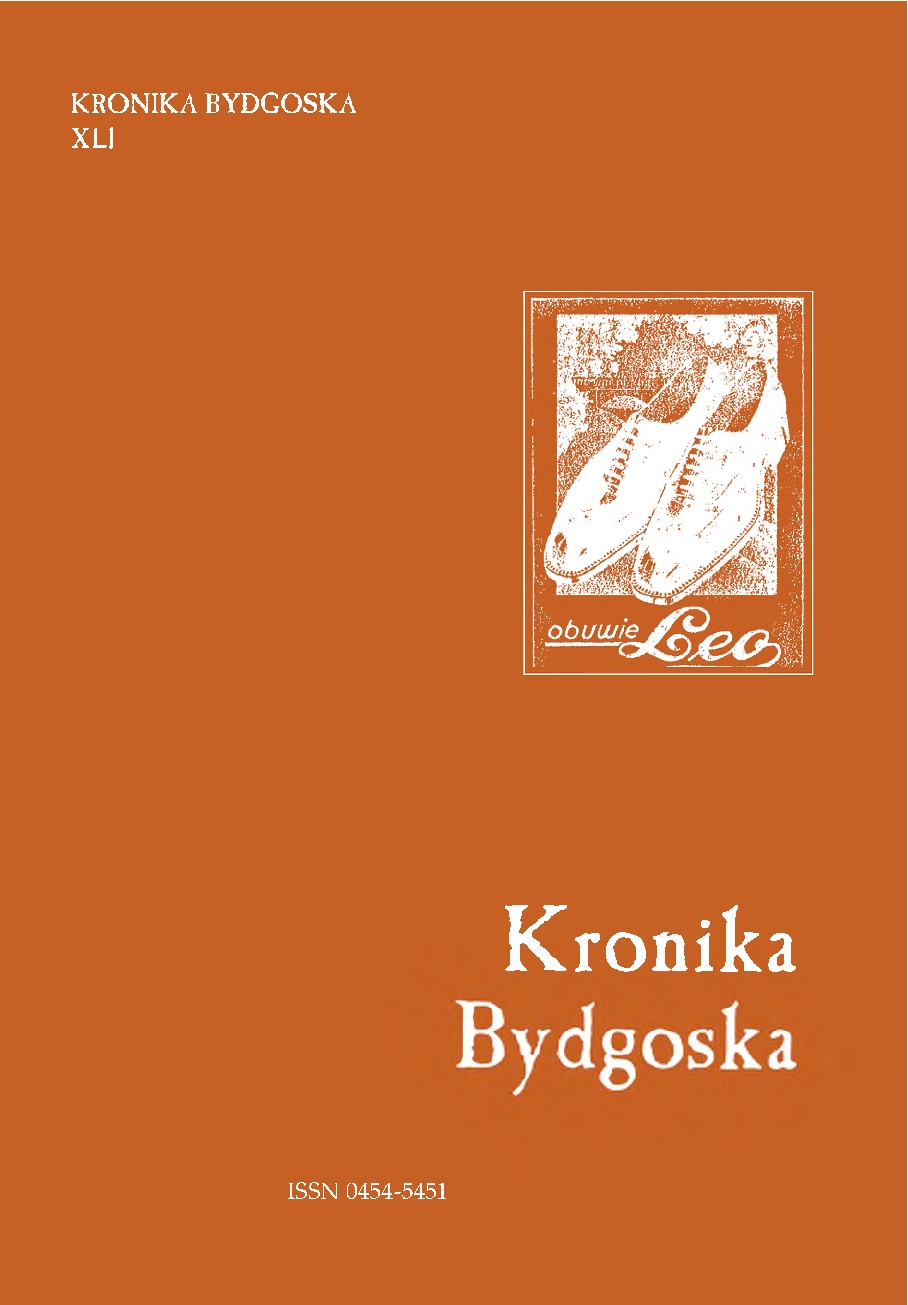Wątek bydgoski w życiorysie gen. bryg. Władysława Liniarskiego, komendanta Obszaru/Okręgu Białostockiego ZWZ/AK, ps. „Mścisław”
DOI:
https://doi.org/10.34767/KB.2020.41.07Słowa kluczowe:
druga wojna światowa, wrzesień 1939 r., Związek Walki Zbrojnej, Armia Krajowa, Żołnierz Wyklęty, Ruch Obrony Praw Człowieka i ObywatelaAbstrakt
Brigadier General Władysław Liniarski (1897-1984) was coming from the region that was annexed by Russia, which was part of Kielce Governorate, Włoszczowa County, in the proximity of the small town of Szczekociny (Gustawów and Małachów villages). After his graduation from high school, he served in the military in Radom, Kielce, and Brest-on-the-Bug. The year 1934 marked a special period in the military career of Lieutenant W. Liniarski. He was sent to Bydgoszcz. He was assigned to the 62nd Infantry Regiment. He stayed in Bydgoszcz until the outbreak of World War II. He served as regimental adjutant and platoon commander. He fought in the 1939 September Campaign at the bridgehead of Bydgoszcz. He was injured during the Battle of the Bzura, in Kampinos. Just after the German and Soviet occupation of Poland, Władysław became a member of structures of the newly instituted Polish Underground State, in the Union of Armed Struggle - the Home Army. He was the Commanding Officer of the Białystok District and chief of the 1st Operational Division. In the end of World War II, as the Commanding Officer of the Home Army District, he refused an order of the Commander in Chief of the Home Army of January 19, 1945 to disband the Home Army. He also decided to continue the underground activity in the face of the Soviets’ imminent approach to Poland and subsequent new occupation. The Home Army units subordinated to him were changed into an organization operating under a new name - the Citizens’ Home Army. After the war, he was arrested by the Security Service. He was tortured and sentenced. The Military District Court in Warsaw sentenced Władysław Liniarski to death penalty. The Highest Military Court rejected appeals and upheld the sentence. President Bolesław Bierut granted a pardon to W. Liniarski. The death penalty was changed to life in prison. In 1954, seriously ill, he was released. He documented activity of the Home Army during the war. He also fought for the veterans’ rights for his former soldiers. He was a member of the Movement for Defense of Human and Civil Rights. He was posthumously promoted to the rank of Brigadier General. Władysław Liniarski was one of the most talented, bravest Polish officers - the indomitable soldiers of the Polish Underground State.
Bibliografia
Bauer P., Polak B., Armia Poznań w wojnie obronnej 1939, Poznań 1982, s. 409.
Danielewicz J., Wyżsi dowódcy wojskowi Bydgoszczy w latach II Rzeczypospolitej, [w:] Bydgoszcz. 650 lat praw miejskich, pod red. M. Grzegorza, Z. Biegańskiego, Bydgoszcz 1996, s. 232.
Fieldorf M., Zachuta L., Generał August Emil Fieldorf 1895-1953, Warszawa 2013, s. 31.
Jastrzębski W., Bydgoszcz w pierwszych dniach wojny 1939 roku, [w:] Bydgoszcz. 650 lat praw miejskich, pod red. M. Grzegorza, Z. Biegańskiego, Bydgoszcz 1996, s. 252.
Komornicki S., Bielecki Z., Bigoszewska W., Jońca A., Ciechanowski K., Armia „Pomorze”, Warszawa 1983.
Komornicki S., Bielecki Z., Bigoszewska, W., Jońca A., Wojsko Polskie 1939-1945. Barwa i broń, Warszawa 1984, s. 11.
Sławiński S., Od Borów Tucholskich do Kampinosu, Warszawa 1973, s. 215.
Wojna obronna Polski 1939. Wybór źródeł, oprac. M. Cieplewicz, T. Jurga, B. Kozłowski, W. Ryżowski, A. Rzepniewski, P. Stawecki, Warszawa 1968, s. 289.
Zarys historii wojennej pułków polskich 1918-1920. 62 Pułk Piechoty, oprac. L. Radwański, Wojskowe Biuro Historyczne, Warszawa 1929, s. 4-7.
Żenczykowski T., Polska lubelska 1944, Warszawa 1990, s. 39.

